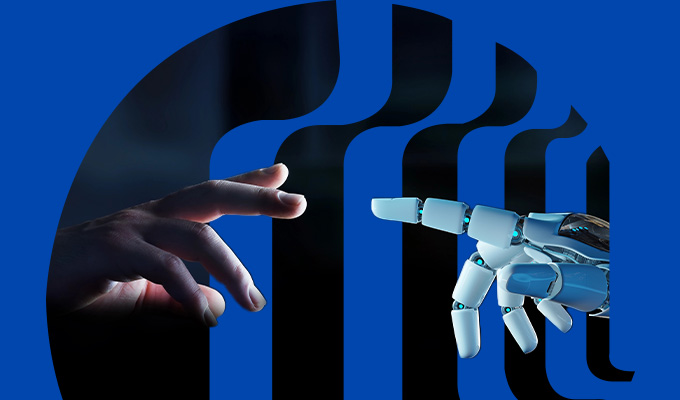The performance of an infotainment and instrument cluster is often driven by the quality of its design and the efficiency of its human machine interface. When Stellantis Group asked Comau to develop advanced industrial processes to build the automaker’s first full electric vehicle, ensuring top performance of the car’s infotainment system was part of the deal. Comau engineers would need to design a solution that could test the efficiency and ease-of-use of the system in a fast, automated and cost-effective manner. More importantly, they would have to guarantee total safety for the operators working in, and around, the vehicle during the testing process. The result? A humanized robotic test bench able to see the screen, execute operations and respond to image, text and voice inputs – just like the driver.
“Comau’s high-performance collaborative system is one of the first of its kind,” emphasized Giovanni Di Stefano, Head of Innovation and Process Technologies. “With its unique combination of accessibility, safety and software simplicity, the fully automated test and control solution can be immediately used without the need for specific competence in robotics or vision systems, saving time and programming costs.”
Giovanni Di Stefano, Head of Innovation and Process Technologies
The Challenge
As part of the agreement to provide innovative industrial processes to produce the New Fiat 500 full-electric vehicle, Fiat brand asked Comau engineers to automate the testing and control process for the vehicle’s infotainment system. The interactive instrument panel acts as a command center that allows the driver to activate specific functions. Accurate testing and control is therefore paramount to delivering a high-quality user experience, which is why the procedure is typically long, repetitive and carried out manually. This can translate to high costs and a significant margin of error. A further challenge was that Fiat required a model-independent solution that could be deployed within different vehicles in the future. It would also need to allow quality control operators to manage and interact with the process every step of the way.
The Solution
Comau engineers started the design process by focusing on the final outcome rather than the testing operations themselves. After identifying the need for close human-robot interaction as a primary requirement, the team built a collaborative robotics solution featuring advanced vision systems and a complete sensing interface that could fully simulate all types of human interaction on a vehicle dashboard. The language-independent testing platform simulates the driving experience, collects and sends data via a CAN/LIN data exchange and validates the functionality and performance of the entire system. What’s more, the full image and text detection, speech recognition and text-to-voice functionality combine to allow the robots to accurately recreate the human experience in a targeted and complete manner.
Taking a closer look at the novel testing paradigm, Comau engineers mounted a Racer5 COBOT on the wrist of an NJ-220 robot set to operate in its Safe version. The large payload robot moves the compact COBOT into the vehicle through the driver’s door or window, thus allowing it to perform the necessary verification and validation activities directly inside the car. Yet the real power behind Comau’s solution is the simple and safe way in which the robot is driven by the operators, thanks to MI.RA/Dexter, an innovative software based on Artificial Intelligence algorithms.
Part of the Comau MI.RA (Machine Inspection Recognition Archetypes) family of digital tools conceived for the Smart Factory, MI.RA/Dexter is a meta-language enabler that allows operators to program the robot using simple, human commands: look for an image, position to respond and execute the action required. The system is therefore able to validate the functionality and performance of the infotainment center by fully simulating the driving experience. The holistic solution, with its naturally intuitive Human-Machine-Interface, grants the highest possible ease-of-use while effectively optimizing the comprehensive testing procedure.
The collaborative system also helps ensure full compliance with the testing process by objectively assisting the operator in completing each assigned task. To do so, it has been given an “almost human” sensitivity through vision systems for the validation of infotainment apps, a microphone and speaker for the recognition of voice commands, and a gripper for delicate contact operations. Finally, the inherent safety features of the 6-axis articulated cobot eliminate the need for protective barriers, which reduces both the overall footprint and the safety costs.
The Results
In addition to designing the Stellantis group’s first fully-automatic solution for integrated infotainment testing, Comau has created a solution that allows Fiat to complete the debugging process three times faster in respect to the non-automatic process. More importantly, it ensures the safe management of any task performed by the collaborative robot in close contact with the operator.
Another advantage, in addition to optimizing the intricate testing routine, is that Fiat can count on full compliance with the quality control process steps every single time. The automated solution also grants better process traceability and repeatability. Finally, the use of meta-language to communicate directly with the robot allows Fiat operators to use the system without specific competence in robotics or vision systems. Fiat is therefore able to manage the complex robotic system autonomously, and in doing so, reduce or eliminate additional programming or coding costs.
X faster debug compared to a manual process
>
0cars tested to date (Q1 2022)
need for safety barriers or protective equipment
%
applicable to different industries and applications


